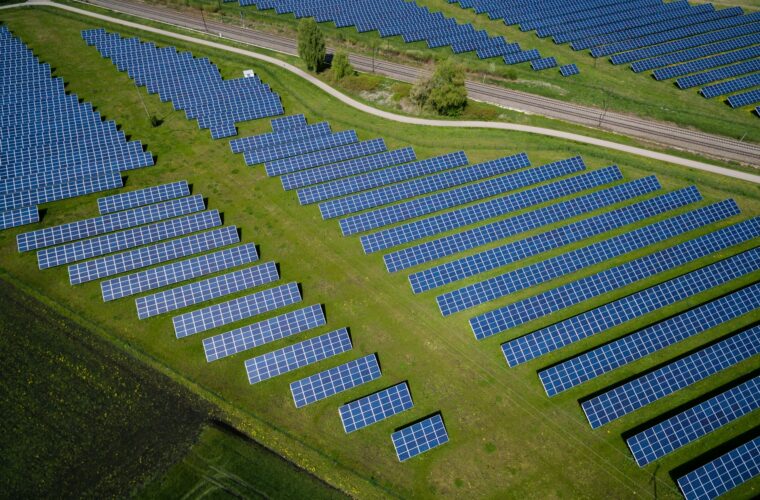For the past few years, the African continent has shown faster urban growth rates than many other parts of the world. A study published by the Organisation for Economic Cooperation and Development projects that Africa’s urban areas would accommodate over 70 per cent of the entire population by 2050. While rapid urbanisation yields many benefits to the continent, such as convenient transportation, it also offers several challenges, including reduced access to foods.
Sustainable food supply is a significant cause of concern in many African countries with urban sprawl. The size of usable farmlands in a developing area decreases as more skyscrapers and road are constructed. If urbanisation is set as one of the priorities, some government officials could divert resources for food supply to these city development projects.
Many experts say these disruptions in farming exacerbate food insecurity in Africa. This inevitably makes crop prices rise and it also makes people rely heavily on food imports. As of 2018, one in four people in the continent did not have access to an adequate amount of food. Also, African countries imported 85 per cent of their food outside the continent from 2016 to 2018.
However, every cloud has a silver lining. Some farmers in Africa have found a way to grow plants even at the centre of cities, using hydroponics.
What is Hydroponic Farming?
Hydroponics is a soilless method of growing fruits and vegetables with nutrient-rich water. Plants from these soilless farms are fed with nutrients diluted in water and grow under the artificial sunlight produced by LED lights.
While there are many variations of hydroponic farming, the first use in history is said to be found in the Hanging Gardens of Babylon, one of the seven wonders of the ancient world built around 500 B.C.E. Some studies say that the gardens had grown a vast range of plants in water rich in oxygen and minerals. Its modern adaptation, powered by artificial intelligence, had recently made headlines with NASA’s use to grow plants in outer space.
With hydroponics, some experts say that farmers can harvest the same amount and quality of plants all around the year, by using up to 80 per cent less water than traditional farming. Installed inside buildings or greenhouses, the change of weather conditions – for example, storms or heat wave – cannot affect the quantity of hydroponically produced plants, either.
A Solution for City Farmers?
One of the biggest benefits expected from hydroponic technology is being able to grow plants in dense spaces, such as city centres. The hydroponic-powered farms are often installed vertically, not horizontally – greens are planted in multiple storeys of boxes. This way of placement does not take up much space inside buildings and greenhouses. Moreover, most of these farming kits are lighter in weight than soil-based farms. This could be seen as convenient to farmers who make big-sized farms inside tall, multi-storey buildings.
Growing greens in city centres may help reducing the cost of transporting the products to the market. In 2015, Dickson Despommier, professor at Columbia University and writer of The Vertical Farm, wrote in his blog that hydroponically produced plants are offered to city consumers that do not have long road trips from farms in rural areas. This is because hydroponic farms can be made at the heart of urban areas.
Prof. Despommier also said: “Spoilage would be greatly reduced since crops would be sold and consumed within moments after harvesting.” In theory, hydroponic farms would allow more high-quality products to be provided at a cheaper price than rural farms.
However, the hydroponic system has some drawbacks. Among them is the maintenance of a clean water circuit. The nutrient-rich water used in hydroponics needs to be replaced once in every two or three weeks to prevent plants from being contaminated with germs. This could be seen as a huge commitment of time and labour for farmers who have big-sized farms.
Also, hydroponic-powered farms don’t sometimes promise a good return on investment. Some crops that grow slow or are heavy, such as rice, may have lower yields than soil-based farms. Some experts recommend hydroponic systems mainly for fast-growing plants like tomatoes rather than slow-growing crops like watermelons to reduce the risk of less harvest.

Photo by Rafik Wahba on Unsplash
Adaptation in Africa
Despite several drawbacks, many city farmers in Africa are starting to turn their eyes to hydroponic-powered farms to secure sustainable food supply.
One of the first companies that adopted hydroponic technology in Africa is a Nairobi-based company, Hydroponics Africa. Founded by Peter Chege in 2012, its goal is to introduce hydroponics to people who seek stable food sources in Africa.
The company as of today, has provided over 6,000 hydroponic farming kits to households in many African countries, including Rwanda, Uganda, and Tanzania. They also hold regular training sessions for those who are interested in hydroponic farming.
Since its foundation, Hydroponics Africa received much support and funding from several government departments and organizations. A report says that the Kenyan government, the Food and Agricultural Organisations of the United Nations, the United States Agency for International Development, and the World Food Programme have provided some financial support for the company.
While Hydroponics Africa offers solutions to people from all levels, Lafamia Greens, a start-up also based in Kenya, target the younger. In an interview with 4i-mag, Elizabeth Okullow, founder of this start-up, said her company’s focus is to let the youth know how important the agricultural business is, and that providing training for current or aspiring farmers was necessary for a sustainable future.
“Some people think that farming is for the old people, or those who retired,” Okullow said. “We are all in the agricultural sector, indirectly or directly. People should know that everything roots from this important sector.”
With thousands of dollars won from a non-profit Korean/Kenyan organisation Yes Africa Centre, Okullow’s company currently plans to build a small hydroponics “starter pack” of strawberries, which are easy to grow and brings higher yields than other plants.
Some farmers adopt hydroponics not only to secure a sustainable food supply, but also to protect the environment.
Fresh Direct Nigeria, the frontrunner of trying hydroponics for urban farmers in Nigeria, say farmers can save both the energy and the environment with the system. According to their data, farmers get 15 times higher yields with 10 times less use of land and water with hydroponics.
“This [hydroponic technology] is something that has to be eco-friendlier”, said Angel Adelaja, founder and chief executive officer of Fresh Direct Nigeria. “We didn’t want to go into the bush and clear land [for farming]. We wanted to be more cautious about how much water we use.”
That’s not all. Hydroponics-farming is also used to raise awareness of women empowerment at 160 Hydrofarm in Harare, Zimbabwe.
As hydroponic-powered farms require less manpower than traditional ways of farming, the company explains that their products can offer opportunities to women to work and lead the farming industry in Zimbabwe.
Venensia Mukarati, founder of 160 Hydrofarm, trains female farmers and uses the hashtag “women in agriculture” in every post she uploads on the company’s Facebook page. She recently wrote on the page that the number of female customers who buy hydroponic farming kits is on the rise.
The future of hydroponics is bright in Africa, Chege said in a news report. “We really get a lot of inquiries all over Africa. They come and see how well the crops are doing. They like what they see,” he said.



